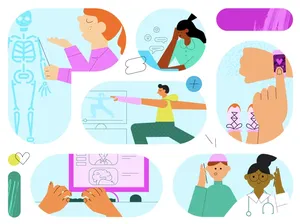An Update from YouTube Canada on the Online Streaming Act
Update: On June 21, the House of Commons voted to pass the Online Streaming Act (Bill C-11) and send the Bill to the Senate. While thousands of creators shared their concerns with the Bill, they were not addressed through amendments to the text. It is possible to support Canadian artists without compromising the creator ecosystem, with modest adjustments to Bill C-11. We will continue to propose solutions and hope to work closely with the Senate towards this shared goal.
For Canadian creators who’d like to share their concerns with their Senators, you can reach out to them directly using this tool. Canadian viewers looking to share their concerns can visit OpenMedia.
On May 31, YouTube Canada shared testimony as part of the Standing Committee on Canadian Heritage study of Bill C-11. Read our remarks in full here.
For more than a decade, YouTube has been a huge part of Canada’s creative economy. We’ve seen firsthand how creators can build businesses, artists can break through to global audiences, and how access to an open platform has allowed Canadians with a camera and an internet connection to share their voice with the world. In 2020, YouTube’s creative ecosystem contributed $923 million to Canada’s GDP, and the equivalent of 34,100 jobs. We see these numbers as only getting stronger in the next decade, and we’re committed to do what we can to make this happen.
That’s why we’re reaching out today to our Canadian creators and viewers with an update. Many of you may be watching the ongoing conversation around the Online Streaming Act, and this new legislation may impact your experience on digital platforms. We wanted to take a minute to break this information down, and share resources for creators and viewers to have your voices heard.
What is Bill C-11?
The Online Streaming Act (Bill C-11) is designed to expand Canada’s current Broadcasting Act, to support the creation, promotion and discoverability of Canadian creative content (CanCon) in the digital age. The Bill would give extensive new powers to The Canadian Radio-television and Telecommunications Commission (CRTC), a government regulator, to decide how content is presented to Canadian viewers on platforms like YouTube, and require platforms to make financial contributions to produce CanCon.
Where does YouTube stand on the Bill?
Right now, Canadians are in the driver's seat of their YouTube experience. They come to learn, to be inspired and to build their businesses. Our goal is to keep it that way, rather than putting the government regulator in between viewers and creators, deciding what gets pushed forward and what does not, and ultimately who wins and who loses. These are decisions that could deeply impact our Canadian creators and how they earn a living on the platform.
The government has said that they don't intend to regulate user-generated content (UGC), but the Chair of the CRTC confirmed that UGC remains in the Bill’s text, opening the door to regulation of that content.
As we have said before, we aren’t opposed to regulation, and we will continue to do our part to support the Canadian creator economy. And we agree that an official music video should be regulated the same way whether it's shown on YouTube or TV. But we believe it's possible to support Canadian musicians, artists and storytellers without putting the livelihoods of thousands of digital Canadian creators at risk. In terms of technology and content, open platforms differ from those of traditional broadcasters, and provisions in the Bill should recognize these important distinctions. Our ask is simple: don’t regulate open platforms like broadcasters, and put specific language in the Bill to exclude UGC from CRTC regulation. We know the government doesn't want user-generated content in the bill, so we are simply asking them to follow through.
How will Bill C-11 impact Digital Creators?
Based on the Bill’s current language, the CRTC would have the authority to:
- Determine how content appears on the platform, including the YouTube homepage and “watch next” section 1
- Apply CanCon rules requiring creators to prove that each individual video that they upload meets the complex legal definition of what is “Canadian enough” to qualify. This means more time and resource allocation for smaller creators, and gives an advantage to large Canadian media companies who have the resources to do so
- Require artificial promotion of some creators over others based on CRTC priorities, which could impact how content reaches global audiences and hurt viewership and revenue
- Regulate the amount of time and type of advertising on creators’ channels, limiting their abilities to earn advertising revenue 2
How will Bill C-11 impact Canadian Viewers?
When you come to YouTube today, our system sorts through billions of videos to recommend content tailored to your specific interests, like how to play the violin, or watch hockey highlights.
Bill C-11 puts that approach at risk. Instead of seeing content on your homepage that’s based on your interests, Bill C-11 would give the CRTC the authority to shape what content is presented for you. 3
And this is worrisome for creators as well. Recommending videos to the wrong audience could drive the ‘click through rate’ on any creator video to zero. If we are forced to “promote” videos that are not relevant to viewers’ needs, it could massively backfire, and lead to fewer recommendations, and decreasing revenues for creators.
Won’t promoting Canadian creators help small channels grow?
If videos are being recommended simply because they qualify as ‘CanCon’ and not because the viewer has shown an interest in that content, there’s a strong chance it won’t be a good fit. When that happens, we know viewers respond with negative inputs like skip, dislikes, or even leave the video all together. Creators count on us to get the match between content and viewers right. And negative viewer signals have a ripple effect across our global recommendations systems - this feedback is interpreted as a sign that the content is either low quality or not relevant. As a result, content that is pushed forward in Canada could fall to the bottom of the list for global audiences. That’s not good for anyone. Creators would have a harder time breaking through and connecting with the niche audiences out there who would actually love their content.
How can I get involved?
We think it’s important that the government hear directly from the creators and viewers who will be impacted by this legislation, and now is the key time to have your voice heard. If this is something you’d like to learn more about, here are a few resources:
- Creators: We’re supporting Digital First Canada, an organization working to lift creator voices. Visit here to learn more, and add your voice to the conversation
- Viewers: Sign the OpenMedia petition
- Everyone: Share your thoughts on social with these helpful assets





